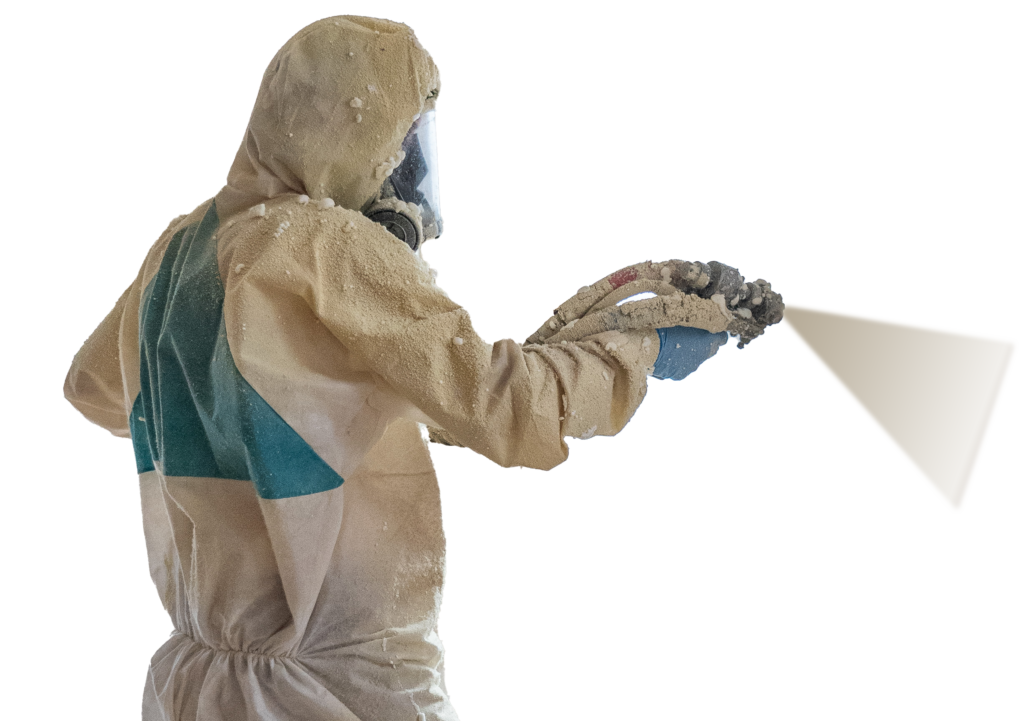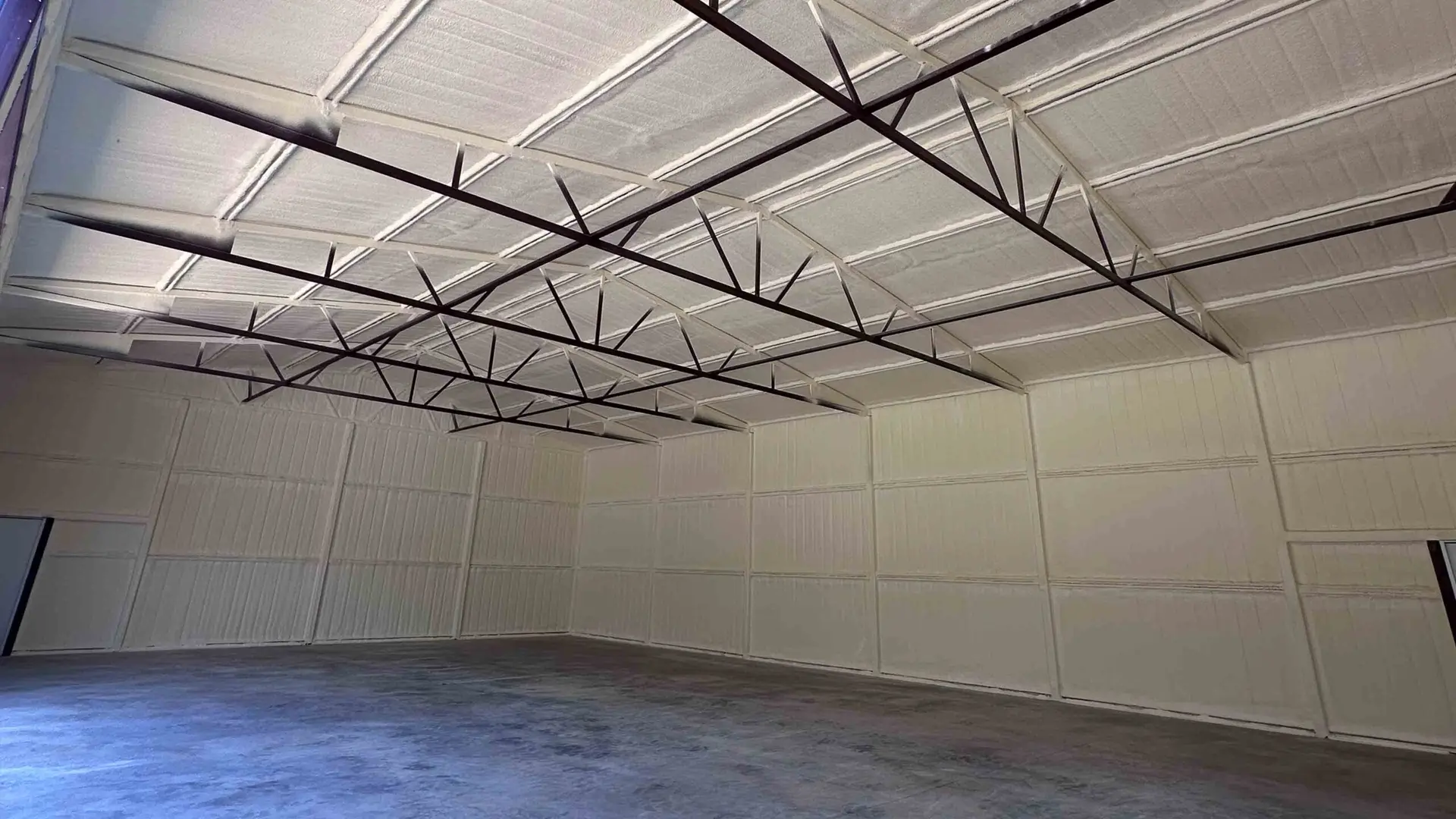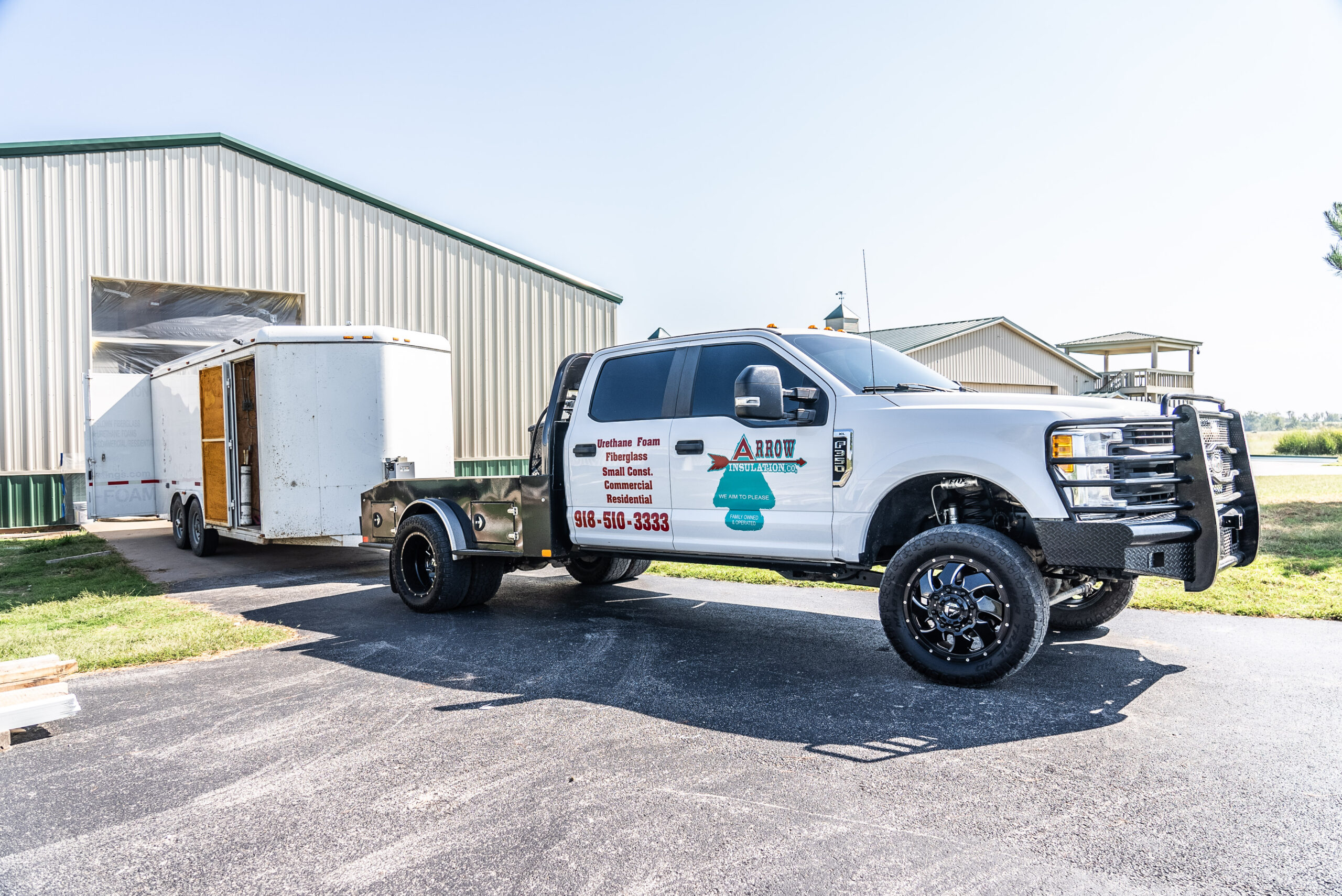Spray foam insulation is widely regarded as one of the most effective solutions for insulating your home, office, garage, or commercial building. Here are just a few key reasons why. Contact us if you are interested in learning more!
According to the U.S. Department of Energy, air infiltration which occurs through traditional insulations can account for 40 percent or more of a home's heating and cooling cost.
With today's energy prices, homebuyers are more concerned with the energy efficiency of a home than ever before. A more energy efficient home is a more valuable home.
Spray foam has some of the highest Sound Transmission Control (STC) ratings in the industry. By providing a complete air seal and offering tremendous sound control!
Spray foam delivers a consistent climate throughout your home ensuring both the comfort and efficiency of your investment.

Maximize your greatest investment with the best insulation available.



With over 40 years of experience, Arrow Insulation is your trusted partner in transforming your project into a highly efficient and effective heating and cooling space. Our expertise ensures optimal insulation solutions tailored to meet your specific needs, enhancing energy efficiency and comfort in every space we work on!
Yes, you can definitely add spray foam insulation to an already-built house! In fact, spray foam is a great option for retrofitting existing homes. Here’s how it can be done:
Attics and Crawl Spaces: These are common areas where spray foam can be applied without major renovations. Open-cell or closed-cell foam can be sprayed directly onto the underside of the roof or in the walls of crawl spaces to improve insulation.
Exterior Walls: For existing walls, contractors can inject spray foam into wall cavities. Small holes are drilled into the drywall or siding, and the foam is injected into the space between the studs. Once the foam expands, it creates an effective air seal.
Basements and Rim Joists: Spray foam is a popular choice for insulating basement walls and the area where the floor meets the foundation (rim joists), helping to prevent air leaks and moisture infiltration.
Since spray foam expands to fill gaps and cracks, it’s especially useful in older homes where traditional insulation might not be enough. It’s important to work with a professional insulation contractor to ensure proper application and avoid damaging existing structures.
Spray foam insulation can release chemicals during installation that may be harmful if not handled properly, but when installed correctly and fully cured, it is generally considered safe. Here’s a breakdown of the safety concerns:
During Installation
Spray foam contains chemicals like isocyanates and polyols. When sprayed, these chemicals mix and expand, creating foam. During this process, volatile organic compounds (VOCs) and fumes can be released, which can cause irritation to the eyes, lungs, and skin.
It’s essential for installers to wear proper protective gear, including respirators, gloves, and full-body suits. The installation area should be well-ventilated, and it’s generally recommended that homeowners leave the area during and shortly after installation.
After Curing
Once the foam is fully cured (typically within 24 to 72 hours), it becomes inert and no longer releases harmful chemicals. At this point, spray foam is considered safe and non-toxic.
Proper installation is critical to ensuring that the foam cures correctly. Poor application can lead to incomplete curing, which may result in lingering odors and potential health risks. Hiring a professional and experienced installer helps avoid these issues.
Spray foam insulation can be flammable, depending on the type used, but there are important safety measures to ensure it remains safe in your home. Here’s a breakdown:
Most spray foams are treated with fire retardants to reduce their flammability. These retardants delay ignition and slow the spread of fire, but they do not make the foam completely fireproof. While the foam will eventually burn under extreme heat, the retardants significantly enhance its fire resistance.
Although spray foam insulation isn’t entirely fireproof, proper installation with the right protective barriers minimizes the risk. In summary, spray foam insulation is flammable, but when treated with fire retardants and installed correctly with appropriate barriers, it can be used safely in residential and commercial buildings.
Mold does not typically grow on spray foam insulation itself, but it can grow on other materials around it if certain conditions are present. Here’s a detailed explanation:
Moisture Resistance: Both open-cell and closed-cell spray foam insulation are effective at reducing moisture infiltration. Closed-cell foam, in particular, acts as a barrier to moisture because of its dense, impermeable structure, making it difficult for mold to find the moisture it needs to thrive.
Non-Organic Material: Mold requires organic material (like wood or drywall) to feed on. Spray foam insulation is made of synthetic materials (polyurethane), which do not provide a food source for mold.
While the spray foam itself does not support mold growth, it’s still important to control moisture in the building. Mold can grow on nearby surfaces (like wood framing or drywall) if:
In summary, spray foam insulation itself does not support mold growth, but moisture control is key to preventing mold in surrounding materials. Proper installation, sealing, and moisture management are essential for keeping your space mold-free.
When choosing between closed-cell spray foam and open-cell spray foam, it’s essential to understand their key differences, benefits, and best-use scenarios. Here’s a comparison to help you decide which is best for your project:
Closed-Cell Spray Foam:
Open-Cell Spray Foam:
Closed-Cell Spray Foam:
Open-Cell Spray Foam:
Closed-Cell Spray Foam:
Open-Cell Spray Foam:
Closed-Cell Spray Foam:
Open-Cell Spray Foam:
Closed-Cell Spray Foam:
Open-Cell Spray Foam:
Closed-Cell Spray Foam:
Open-Cell Spray Foam:
Closed-Cell Spray Foam:
Open-Cell Spray Foam:
Closed-Cell Spray Foam:
Open-Cell Spray Foam:
Choosing between the two depends on your specific needs for insulation, moisture control, budget, and space considerations.
Yes! One of our team members will reach out to you regarding your quote within the next 24 hours. If you have any further questions or need assistance in the meantime, please feel free to contact us. We’re here to help!
No money is needed as a down payment for us to complete your job! If you have any further questions reach out to our team!
Yes, we do provide detailed estimates for projects. One of our team memebers will also be available for questions regarding your estimate after it is sent.
Yes! We take our customer care and satisfaction very seriously. Throughout the whole process the owner will be directly involved in all the steps from start to finish.
Yes! To ensure you are pleased and quality standards are met the owner will do a personal walkthrough of the project to ensure customer satisfaction.